Shaoxing wine, also referred to as Shaoxing rice wine, is a customary Chinese wine and is a fundamental ingredient in Chinese cuisine. Made from fermented glutinous rice, this amber-colored wine is known for its rich, slightly sweet, and complex flavor. It's a key component in many Chinese dishes, used to marinate meats, enhance the flavor of sauces, and add depth to braises and stir-fries. Shaoxing wine's unique taste helps to balance flavors and reduce the strong scents of certain ingredients, making it an indispensable element in authentic Chinese cooking.
But what if you ran out of Shaoxing wine or didn't have any? Fear not. In this post, we will share some of the best Shaoxing wine substitutes so you can resume whipping up delicious dishes.
The 14 Best Substitutes for Shaoxing Wine
Best Alcoholic Substitutes
Dry Sherry
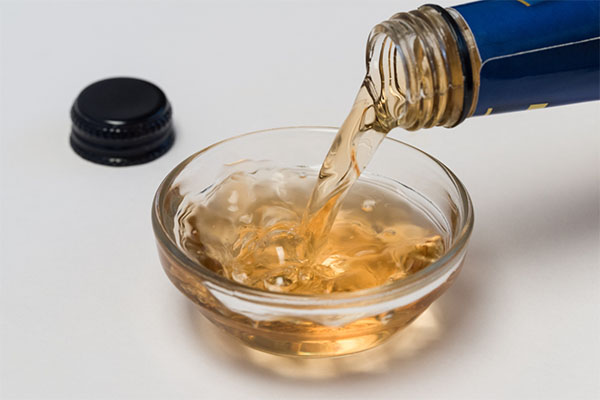
One of the closest Chinese cooking wine substitutes, dry sherry offers a similar flavor profile and can be used in equal amounts as Shaoxing wine. Dry sherry is often considered the best Shaoxing wine substitute, primarily due to its similar flavor profile. Like Shaoxing wine, dry sherry has a complex, rich, and slightly nutty taste, which makes it an excellent alternative to Chinese cooking.
To start, I recommend using half the amount of dry sherry to avoid overpowering the dish, but you can use it in a one-to-one ratio when substituting dry sherry for Shaoxing wine. This substitution works well in various dishes, such as le mein or dumpling fillings, where Shaoxing wine is typically used to enhance the depth and complexity of flavors. Dry Sherry is particularly effective in meat dishes and braised recipes, adding a similar richness and aromatic quality.
However, choosing a Dry Sherry that is not too sweet or heavily fortified is important, as this can alter the dish's taste. This versatile rice wine substitution ensures that your Asian-inspired dishes maintain their authenticity and depth of flavor, even without traditional Shaoxing wine.
Mirin
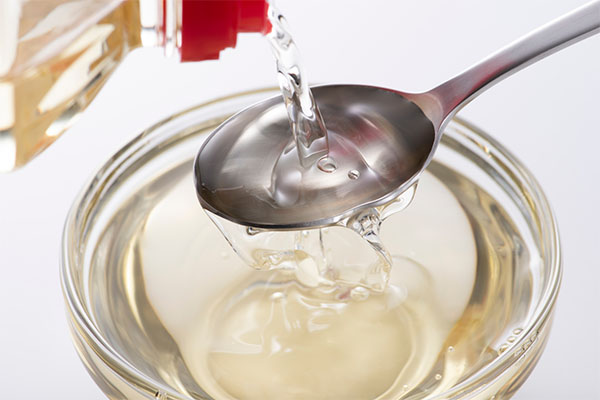
Mirin is a sweet Japanese rice wine that's a bit sweeter than Chinese cooking wine but can be a good substitute, especially in dishes where a touch of sweetness is desirable. Mirin is a highly suitable substitute for Shaoxing wine, especially in dishes where a subtle sweetness can enhance the overall flavor. Mirin's mild, sweet, and slightly tangy profile complements Shaoxing wine's rich and aromatic nature, though it is less robust and more sugary.
When substituting mirin for Shaoxing wine, consider using a slightly lesser amount to avoid overly sweetening the dish, especially if the mirin is of the sweeter variety. Mirin is particularly effective in marinades, glazes, and sauces, where its gentle sweetness can balance out savory and salty flavors. It's also excellent in marinades for meat like cumin lamb, and seafood dishes like steamed fish, adding depth and a subtle glaze.
However, due to its higher sugar content, it's important to adjust the other sweet elements in the recipe accordingly. Mirin's versatility makes it a valuable addition to a range of Asian-inspired dishes, providing a similar complexity and a delicate, sweet accent instead of Shaoxing rice wine.
Sake

Sake, a Japanese rice wine, can be used as a Chinese cooking wine substitute, though it's slightly lighter and less robust than Chinese rice wine. Made from fermented rice, sake can serve as an excellent substitute for Shaoxing wine, particularly in recipes where a milder, less pronounced flavor is suitable. While sake is lighter and has a slightly different flavor profile than the richer, more robust Shaoxing wine, it still offers a comparable depth and subtle sweetness.
When substituting sake for Shaoxing wine, use it in a one-to-one ratio. This substitution works well in a variety of dishes, including braised meat and Japanese-style glaze, where sake can impart a smooth, refined flavor. It's particularly effective in delicate dishes such as seafood and chicken, where its understated taste can be enhanced without overpowering the natural flavors. Sake's subtle sweetness and lower alcohol content make it a versatile ingredient, capable of blending seamlessly into the background of a dish.
Cooking Sake
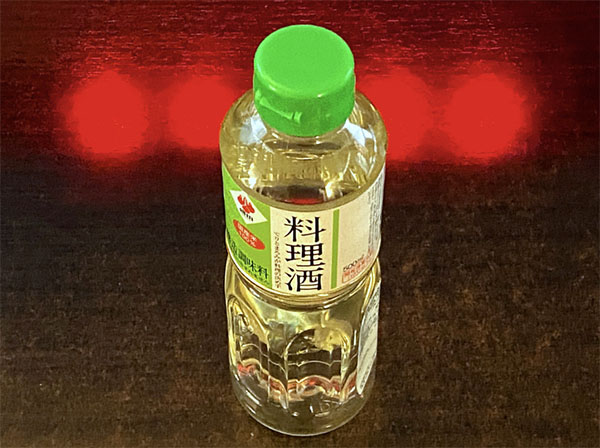
Image Source: Flickr
Cooking sake, a variety of Japanese rice wine, is an excellent alternative to Chinese rice wine, providing a comparable balance of sweetness and depth. Unlike drinking sake, cooking sake contains more saltier, so it can add flavor to whatever you add it to. While cooking sake is milder and slightly sweeter than Shaoxing wine, it shares a comparable alcohol content and ability to enhance the flavors of a dish.
You can use it in a one-to-one ratio when substituting cooking sake for Shaoxing wine. This substitute is particularly effective in seafood and meat marinades, dumpling fillings, and braised dishes, where its subtle sweetness can complement the other ingredients. Cooking sake is also excellent for deglazing pans and imparting depth to soups and stews. Its alcohol content helps to tenderize meats and release flavors in the cooking process, similar to the role of Shaoxing wine in Chinese cuisine.
Since cooking sake has a slightly different flavor profile, with a milder and less complex taste, it's best used in dishes where these subtleties can blend well with the overall flavor palette rather than in recipes that rely heavily on the unique characteristics of Chinese cooking wine.
Dry White Wine
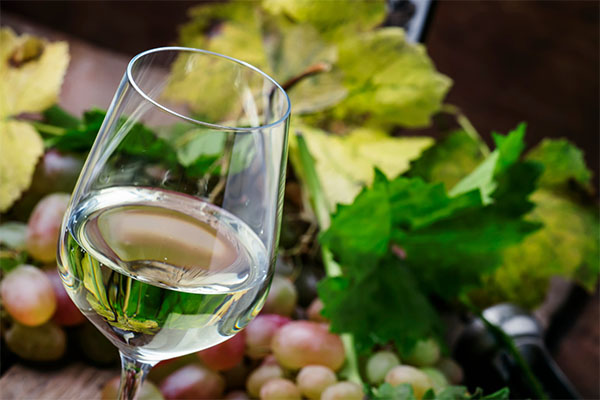
If other options are unavailable, drinking wine like Pinot Grigio or Sauvignon Blanc, though it lacks the same depth. Dry white wine is a practical and accessible substitute for Shaoxing wine, particularly in recipes where the primary goal is to add a depth of flavor with a hint of acidity. While it lacks Shaoxing wine's unique, nutty, and slightly sweet profile, dry white wine brings its bright and crisp characteristics to dishes.
When substituting Shaoxing wine, use an equal amount of dry white wine as you would Shaoxing wine. Adding a pinch of sugar to mimic Shaoxing wine's slight sweetness is best. This substitution fits well in various dishes, like risotto, noodle dishes, or gravies. It's especially effective in lighter dishes like seafood or chicken, where its acidity can enhance the flavors without overpowering them. To mimic the slightly sweet note of Shaoxing wine more closely, consider adding a pinch of sugar to the white wine. Best to avoid overly oaky or fruity options.
Gin
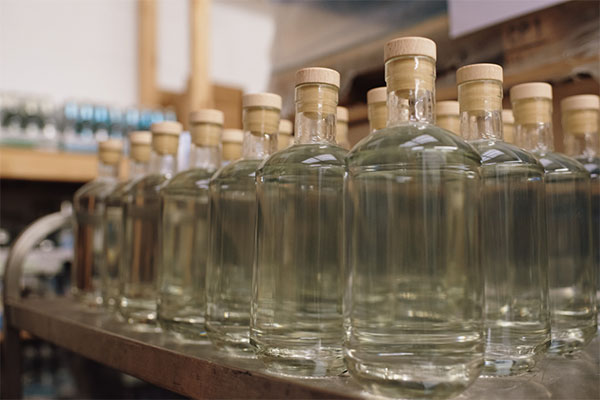
Gin may seem like an unconventional substitute for Shaoxing wine, but its complex botanical flavors can surprisingly mimic some aspects of rice wines and Shaoxing's profile, particularly in savory dishes. Gin's juniper and herbal notes can add a unique depth and aromatic quality, somewhat emulating Shaoxing wine's rich, nuanced flavors.
When substituting with gin, exercise caution and use it sparingly due to its robust flavor and alcohol content. Begin with approximately half the quantity of Shaoxing wine specified in the recipe, then adjust to taste. Gin is particularly effective in braised dishes, dumpling fillings, glazes, or dumpling fillings, as it can infuse meats or dishes with its distinctive botanical flavors.
Best Non-Alcoholic Substitutes
There are non-alcoholic options for substituting Shaoxing wine. Here are some of my favorites:
Rice Wine Vinegar
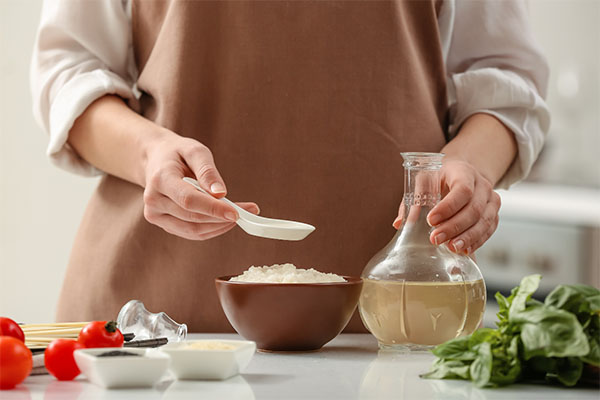
With its mild acidity and subtle sweetness, rice wine vinegar (also known as rice vinegar) can be a surprisingly effective substitute for Shaoxing wine, particularly in recipes where a slight tang can be beneficial. While it doesn't have the same depth and richness as Shaoxing wine, rice vinegar adds a light, clean flavor that can brighten up a dish.
When using rice vinegar as a substitute, diluting it with water is best to mitigate its acidity. Use half the amount of rice vinegar mixed with an equal part of water to replace Shaoxing wine. This substitution works well in sauces, meat marinade, and pickling, where you want to introduce a mild acidic note without overpowering the dish.
Apple Cider Vinegar

Apple cider vinegar can be a suitable substitute for Shaoxing rice wine in certain cooking scenarios, particularly where a fruity acidity can enhance the overall dish. While distinctly different in flavor, apple cider vinegar has a mild fruitiness and tanginess that can somewhat mimic the acidic component of Shaoxing wine.
When using it as a substitute, dilute the apple cider vinegar with water to soften its sharpness. A good rule of thumb is to mix half the amount of apple cider vinegar with an equal part of water to replace the Shaoxing wine in a recipe. This blend is especially effective in pickling, dipping sauce and braised dishes, adding a subtle, fruity acidity that can brighten flavors. It's also useful in stir-fries and braised dishes where a balance of sweet, sour, and savory flavors is desired.
Apple cider vinegar lacks the depth and slight sweetness of Shaoxing rice wine; it's best used in recipes where its unique apple flavor and sharper acidity can be harmoniously integrated rather than in dishes that rely heavily on the more nuanced profile of Shaoxing rice wine. If you feel like experimenting, I recommend you add a touch of sugar to mimic the sweet taste of Shaoxing cooking wine.
Beef, vegetable, or chicken broth
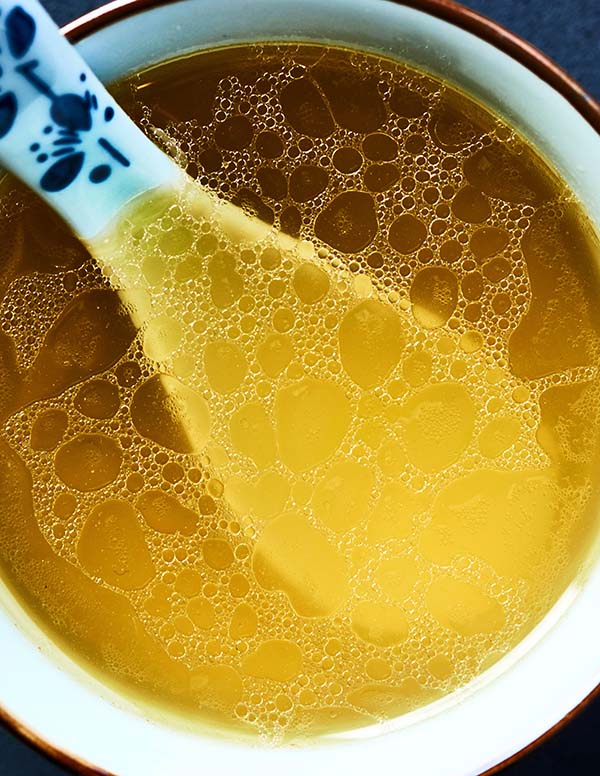
Chicken, vegetable, or beef broth can serve as an excellent non-alcoholic substitute for Shaoxing rice wine, particularly in recipes where the primary aim is to add depth and complexity rather than a specific wine flavor. Broths bring a savory, umami quality to dishes, somewhat emulating Shaoxing rice wine's rich, rounded profile.
When substituting broth for Shaoxing rice wine, use it in a one-to-one ratio. This substitution is particularly effective in braises, stews, soups, and steaming dishes, where the broth's flavor can meld with the other ingredients to create a full-bodied and savory depth. It's also a great option in marinades for meat or stir-fries, offering a subtle but flavorful liquid base.
The choice between chicken, vegetable, or beef broth depends on the dish and the desired flavor profile; chicken broth is generally the most versatile, beef broth suits heartier dishes, and vegetable broth is perfect for lighter, vegetarian recipes. Using broth as a Shaoxing wine substitute ensures that your dishes retain their savory richness, even without adding Shaoxing wine.
White Grape Juice
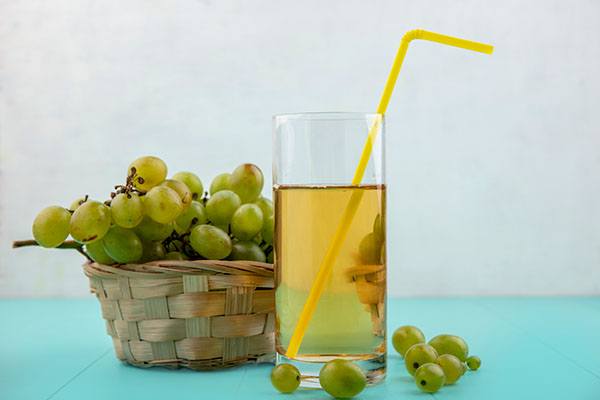
Image by stockking on Freepik
White grape juice is an excellent non-alcoholic Shaoxing wine substitute, especially in dishes where a subtle sweetness and fruity undertone can complement the flavors. Its light and mildly acidic nature can emulate some of the characteristics of Shaoxing wine, making it suitable for those avoiding alcohol.
When using white grape juice as a substitute, use it in equal measure to replace Shaoxing wine. However, as white grape juice is sweeter and lacks the alcohol content of Shaoxing wine, it's best used in recipes where a slight sweetness is desirable. To add complexity and mimic Shaoxing wine's acidity, consider mixing a small amount of vinegar with the white grape juice. This adaptation ensures your dish maintains a balanced and nuanced flavor profile.
Apple Juice
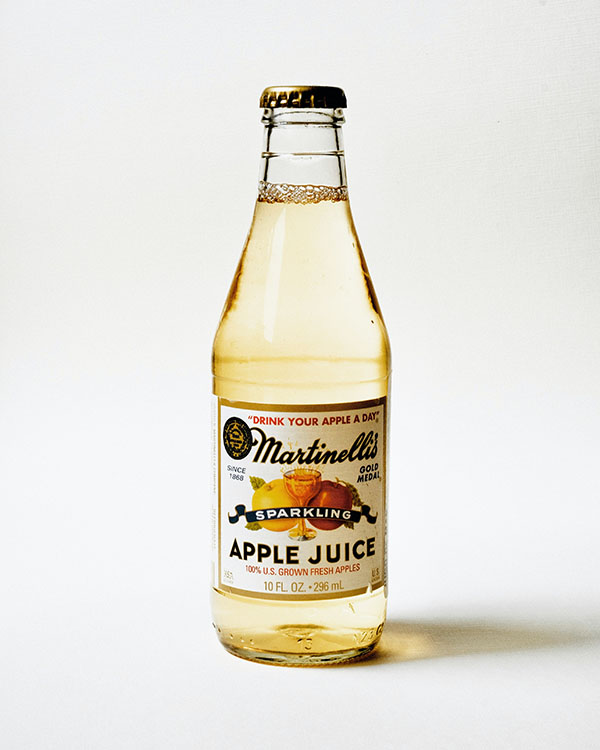
Apple juice is a surprisingly effective non-alcoholic substitute for Shaoxing wine, particularly in recipes with a desirable sweet and fruity undertone. The natural sweetness and slight acidity of apple juice can mimic some of Shaoxing wine's flavor characteristics, especially in dishes where the wine's depth and complexity are not the main focus.
When substituting, use apple juice in equal parts to replace Shaoxing wine. Since apple juice is sweeter and lacks the alcohol content of Shaoxing wine, it's best used in recipes where these differences can be accommodated or beneficial. Adding a splash of vinegar to apple juice can help replicate Shaoxing wine's acidic component, enhancing its suitability as a substitute in a wider range of dishes.
Light Soy Sauce
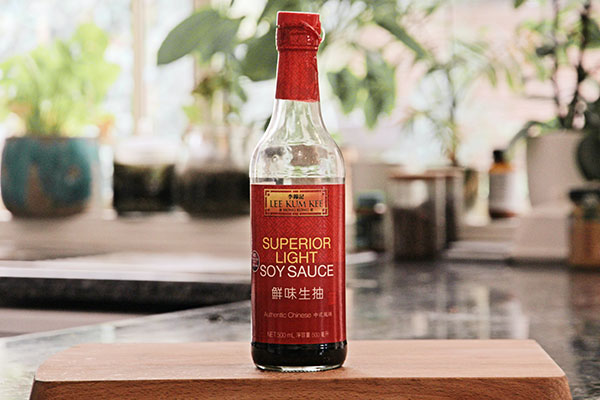
Light soy sauce can be an effective Shaoxing wine substitute in certain cooking scenarios, particularly where a dish can benefit from its savory depth and umami qualities. While light soy sauce doesn't replicate the sweetness or complexity of Shaoxing wine, it brings its own distinct flavor profile that can enhance a dish similarly. Based on personal experience, I recommend adding a touch of sugar to add some sweetness it lacks.
When substituting light soy sauce for Shaoxing wine, use it slightly less, considering its strong flavor and saltiness. A good starting point is to use about three-quarters of the amount of Shaoxing wine called for in the recipe. Light soy sauce works well in marinades, stir-fries, and braised dishes, adding a rich, savory character. It proves notably effective in both meat and vegetable dishes, providing a depth of flavor that complements a diverse range of ingredients.
Balsamic Vinegar
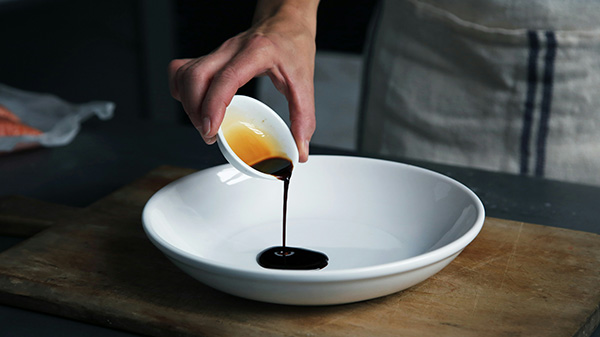
Balsamic vinegar can be an excellent substitute for Shaoxing wine due to its complex flavor profile, which includes a balance of sweet and sour notes, adding depth and richness to dishes. Its sweetness can mimic the slightly sweet undertones of Shaoxing wine, while its acidity adds a brightness that can elevate the flavors in a recipe.
When substituting balsamic vinegar for Shaoxing wine, it's best to use it sparingly because of its potent flavor — start with half the amount of Shaoxing wine called for and adjust to taste. Balsamic vinegar works best in dishes where its distinct flavor can complement the other ingredients, such as in marinades, glazes, or sauces for meat and vegetables. Its use is particularly effective in slow-cooked dishes and reductions where its full body and richness melt well with the other flavors over time.
Non-alcoholic White Wine Or Beer
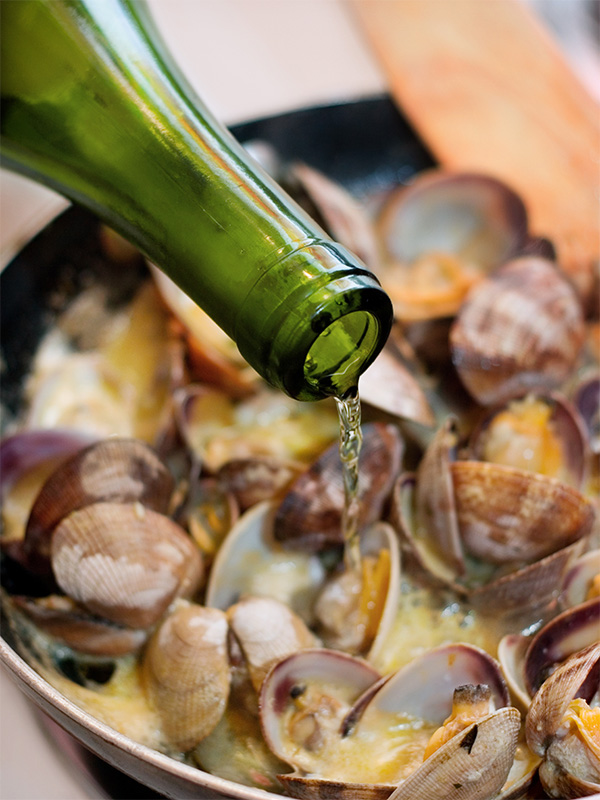
Non-alcoholic white wine or beer can be excellent substitutes for Shaoxing wine, offering a versatility that aligns closely with the original's purpose in cooking. They provide the depth and complexity of flavor that Shaoxing wine is known for, minus the alcohol content.
Non-alcoholic white wine brings a similar acidity and fruitiness to dishes, making it ideal for deglazing pans, marinating meats, and enhancing sauces or stews. With its malted flavors, non-alcoholic beer can add a unique depth to braised dishes, marinades, and soups. Generally, you can use these substitutes in a 1:1 ratio for Shaoxing wine. They work best in recipes where the wine's primary role is to add a subtle layer of flavor rather than serving as a major component.
